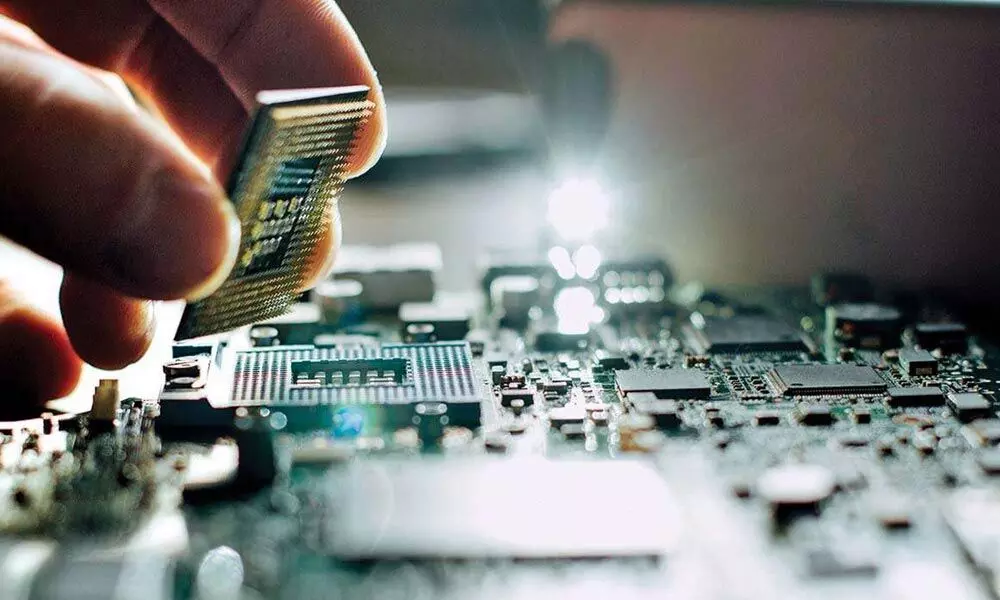AP's new policy bets big on electronics mfg
image for illustrative purpose

Andhra Pradesh Government has unveiled its New Electronics Policy with thrust on investments in electronic manufacturing clusters and component manufacturing, giving a fillip to private investments so as to create more employment opportunities for local youth. The government promised to offer customised incentive packages and clearances on a fast-track. It says the electronics manufacturing unit/company has to generate an employment of more than 4,000 people or invest Rs. 500 crore or above in the State. Special incentive package for semiconductor and LCD fabs will be given. The government will work with large investors with an investment of over Rs.7,500 crore (USD 1 billion) to create a global fab manufacturing destination. The government said it will make efforts to not only fast track such investment proposals through a special committee setup but also ensure that these investors are ensured infrastructure and skilled manpower in a rapid manner. The salient features of the new policy include encouraging State manufacturing firms in AP Government projects, preferential market access shall be given to electronics industry as per the directions of government from time to time. AP Electronics & Information Technology Agency (APEITA) will act as a nodal agency for implementing the policy.
The State also articulated its desire to make a big impact in the Indian market for electronics goods, which stood at $118.2 billion in 2019-20 and is expected to quadruple to $400 billion by 2025, driven by growth in income levels and higher disposable incomes.
Mobile phones, industrial electronics, strategic electronics are some of the major sub-sectors in electronics with growth potential in India. Electronics manufacturing has become one of the fastest growing manufacturing industries in the world with a global production of about $2 trillion in 2017-18. While traditionally countries such as China, South Korea and Taiwan have led the manufacturing output, the fast-changing trade equations between major economies worldwide combined with the supply chain rearrangements as a result of Covid-19 pandemic are causing investments to flow into countries such as India, Malaysia, Thailand and Vietnam. The policy explains that there is a need for a holistic policy framework for the electronics sector in AP to compete with other States which have an existing electronics ecosystem along with attractive incentives and tap into investments coming to India.
Senior IAS officer and Principal Secretary G. Jayalakshmi, in the GO containing details of the policy released on May 17, stated that the AP government is committed to developing the State in a holistic manner. This policy envisions "Transforming the State of AP into a preferred investment destination for the electronics sector while focusing on backward integration of the manufacturing value chain, moving beyond assembly operations."
The State will also endeavor to work with the Government of India to align the State's initiatives and incentive schemes with those of the Centre and leverage underlying synergies. "The policy as a whole is very good for developing AP, particularly post-pandemic. We wholeheartedly welcome the new policy," IT Association of AP (ITAAP) president Sridhar Kosaraju told Bizz Buzz on Tuesday.
He said the policy lays emphasis to create large-scale direct employment and create a robust electronics ecosystem during the policy period, by way of focus on upstream value chain, creating large-scale employment in the thrust areas of mobile phones, consumer electronics, industrial electronics, electronics components and strategic electronics. An official said capitalising on growth in domestic consumption, creating industry-ready talent pool and fulfilling demand for skilled human resource and focusing on fast growing sub-sectors such as mobile phones, consumer electronics and strategic electronics across traditional assembly and electronic component manufacturing including batteries, screens, camera modules, printed circuit boards (PCBs) among many others would bring a lot of investments to the State.

